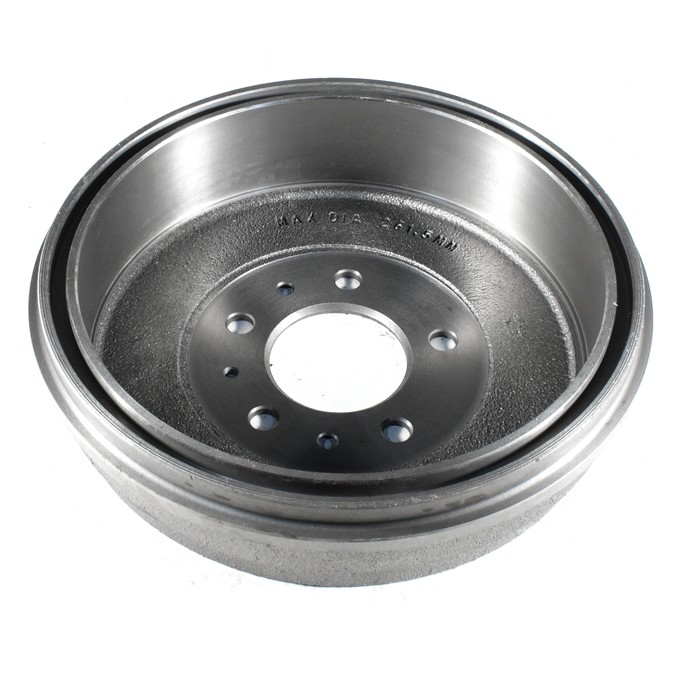Disc brakes vs. drum brakes: what do I have?
May 01, 2021If you're looking to get your brakes changed, it's important to first understand what kind of brakes you have: disc or drum brakes. You will need to know this information when ordering new parts.
What kind of brakes are on my car?
Nowadays, the majority of new vehicles have disc brakes in the front and drum brakes in the back. It's not uncommon to see disc brakes on all four wheels too. But only very very old vehicles will have drum brakes all around - the switch to disc brakes came in the 1970s.
How to tell whether your brakes are drum or disc
To double-check, look through one of the holes in the top of your front wheel. If you see a shiny smooth metal surface, that is your disc rotor. However, if you see a rusty and not smooth round surface, that's your brake drum. Some rotors will have light rust specklings.
Another way to check is to look at the backside of the wheel - a disc brake will have a rubber hose going to the brake calliper, whereas a drum brake will have a metal tube.
Drum brakes 
In the early days of cars, automotive manufacturers installed drum brakes at every wheel. They are called that because all the braking components are contained in a round drum (surprising!) that rotates with the wheel. When you brake, the shoes inside the drum press on it, slowing down the wheel. The problem with these brakes is they often fade on steep hills or during aggressive braking because the drum cannot contain the heat buildup created. This design flaw and performance failures that came from it led to drum brakes being deemed unsafe for these specific driving conditions.
Disc brakes
 Back then, manufacturers discovered that car racers enjoyed a better performance in competitions with a new type of car brake: disc brakes. In this design, the disc (or the rotor) is exposed to outside air all the time and braking is done with the caliper and brake pads as opposed to shoes in the brake drum. The disc brake has a chance to actually cool down compared to the drum which traps in the heat. This new at-the-time design allowed heat to escape which drastically improved braking performance. It was decided then to make the switch to disc brakes in the front since most cars became front-wheel drive and the majority of braking power (60-90%) comes from the front wheels. Most new vehicles have a front disc and rear drum brake set-up which is perfectly safe because both types of brakes have been further improved since the 1970s.
Back then, manufacturers discovered that car racers enjoyed a better performance in competitions with a new type of car brake: disc brakes. In this design, the disc (or the rotor) is exposed to outside air all the time and braking is done with the caliper and brake pads as opposed to shoes in the brake drum. The disc brake has a chance to actually cool down compared to the drum which traps in the heat. This new at-the-time design allowed heat to escape which drastically improved braking performance. It was decided then to make the switch to disc brakes in the front since most cars became front-wheel drive and the majority of braking power (60-90%) comes from the front wheels. Most new vehicles have a front disc and rear drum brake set-up which is perfectly safe because both types of brakes have been further improved since the 1970s.
Types of brakes on your car
While to stop or slow down, you may have disc or drum brakes on your vehicle, there are actually even more brakes to be aware of! The other type is an emergency brake, also called a parking brake, which is designed to bypass the normal braking system. These use levers or cables to stop the car in case the regular brakes malfunction. These usually go to the rear of the car and stop it from there. Another type of brake on your vehicle may be Anti-lock Braking System (ABS) if you have a newer model.
| Disc brakes | Drum brakes | |
|---|---|---|
| Recency | Newer | Older |
| Performance | Better for aggressive braking, hills, & racing | Better for casual driving |
| Cost | More expensive | More affordable |
| Placement | Usually in the front | Usually in the back |


